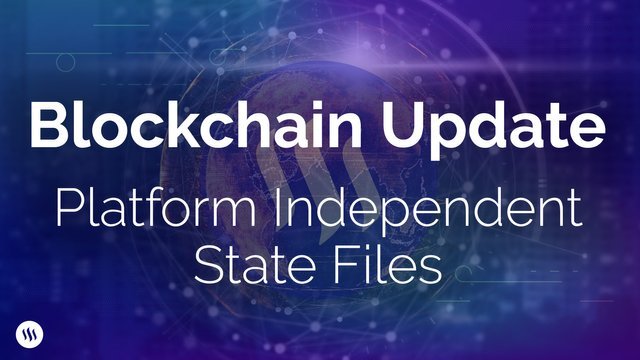Blockchain Update: Platform Independent State Files

SMT Burnups?
The blockchain team has spent the time since our last burnup focusing on the remaining token emissions work for SMTs and Platform Independent State Files. Aside from a little more work on SMT emissions, all of that development work is now complete and is awaiting review. For that reason, there will be no more SMT Burnups!
Platform Independent State Files
There are two very good reasons for having Platform Independent State Files (PISFs). PISFs can be used to dramatically reduce downtime on exchanges while also increasing the level of decentralization in the ecosystem.
What are they?
Up until now, whether using MIRA or boost memory mapped files, the databases were “platform specific” in that they were potentially impacted by the operating system on which they were running or the machine that the database was built with, or both. PISFs are a way to migrate that database into a format that is consistent across all platforms.
Exchanges
Without a Platform Independent State File, an exchange (or any other node operator) that has to conduct a reindex (e.g in the event of a hardfork) might have to wait 24 hours or longer for that reindex to complete. During that time their Steem node will not be functional. With PISFs we can ensure that no node has to be down for more than a few hours!
Decentralization
Another benefit of PISFs is that it will become far easier for community developers to host their own independently verified version of state. If just a few people host their own versions of state, updated every 10,000 blocks (for example) then it will be easy to verify that the state files are identical with identical hashes.
This is the key to understanding how PISFs increase decentralization without decreasing security. The easier it is to independently verify that state files are consistent, the more certain we can be that the database has not been tampered with with very low computational costs.
Verifiability
This provides some insight into how we think about blockchains as a technology. We do not believe that blockchain’s superpower is “smart contracts.” Just because code is executed by a decentralized network of machines does not mean you can trust it. Whether it is code or content that is stored on a blockchain, what matters is whether that information has been independently verified.
This gets back to a core tenet of the open source software movement: eyeballs are what matter. Linus’ Law states that, “given enough eyeballs, all bugs are shallow.” Extended to the blockchain space we could say that, “given enough eyeballs, all inconsistencies are shallow.
Soft Consensus
This is why we think there is so much potential lurking in “Soft Consensus.” Soft Consensus is code that is stored on a distributed ledger like Steem, but is not executed by the network (“on-chain”). This decentralizes the code by enabling anyone to verify that it is being executed properly, without the extremely high cost of executing that code on-chain.
Steem’s superpower is that it reduces the cost of Soft Consensus to a fraction of what it would be on any other chain. This enables applications like Splinterlands to take advantage of Steem’s high speed, fee-less transactions, and vibrant community to bootstrap the best blockchain-powered trading card game in the world.
Testnet
With SMT development now done (just awaiting review which could reveal minor additional work) the next major announcement from the blockchain team will be the release of the testnet which we expect to happen in 1-2 weeks!
@steemitblog Rewards
As we disclosed in our last post, now that it is so easy to set beneficiaries on steemit.com posts, we will be accepting rewards on @steemitblog posts, but setting the beneficiary as @null. This will enable our posts to Trend in a more organic way that reflects how stakeholders feel about our announcements, without enriching us financially. This time we thought we'd try something different, so in addition to setting @null as a beneficiary, we are also setting the SteemDAO as a beneficiary! That means half of the author rewards will be burned, and half will go to the DAO to fund proposals.
Want to learn more about how Steem and SMTs will work? Check out this Deep Dive Into SMT Voting Mana by Steemit's Senior Blockchain Engineer, @vandeberg.